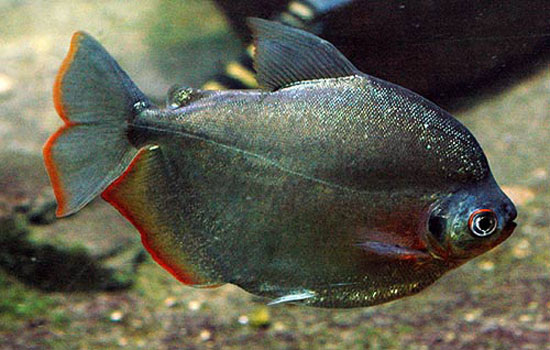| Serrasalmidae (Piranhas and pacus), subfamily: Colossomatinae |
| 25 cm SL (male/unsexed); max.weight: 1,000.0 g |
|
benthopelagic; freshwater; pH range: 5 - 7.80000019073486; dH range: 20, potamodromous |
| South America: rio Paraguai, lower Paraná and lower Uruguai rivers basins. |
|
Vertebrae: 35-36. This species differs from M. aureum by having the last abdominal spine reaching the anal-fin origin or almost so (vs. last abdominal spine clearly separated from the anal-fin origin), vertebrae 35-36 (vs. 38-39), and a conspicuous black blotch on opercle (vs. no black blotch or inconspicuous); differs from M. albiscopum by anal-fin with branched rays 26-32 (vs. 31-38); differs from M. unimaculatum by having circumpeduncular scales 30-34 (vs. 34-40), perforated scales on lateral line 74-98 (vs. 95-110) and vertebrae 35-36 (vs. 37) (Ref. 117280). |
| Reported to be an herbivore fish, which is highly dependent from the floodplains and of great economic importance for both commercial and sport fisheries (Ref. 117280). |
|
Least Concern (LC); Date assessed: 21 December 2020 Ref. (130435)
|
| harmless |
Source and more info: www.fishbase.org. For personal, classroom, and other internal use only. Not for publication.

